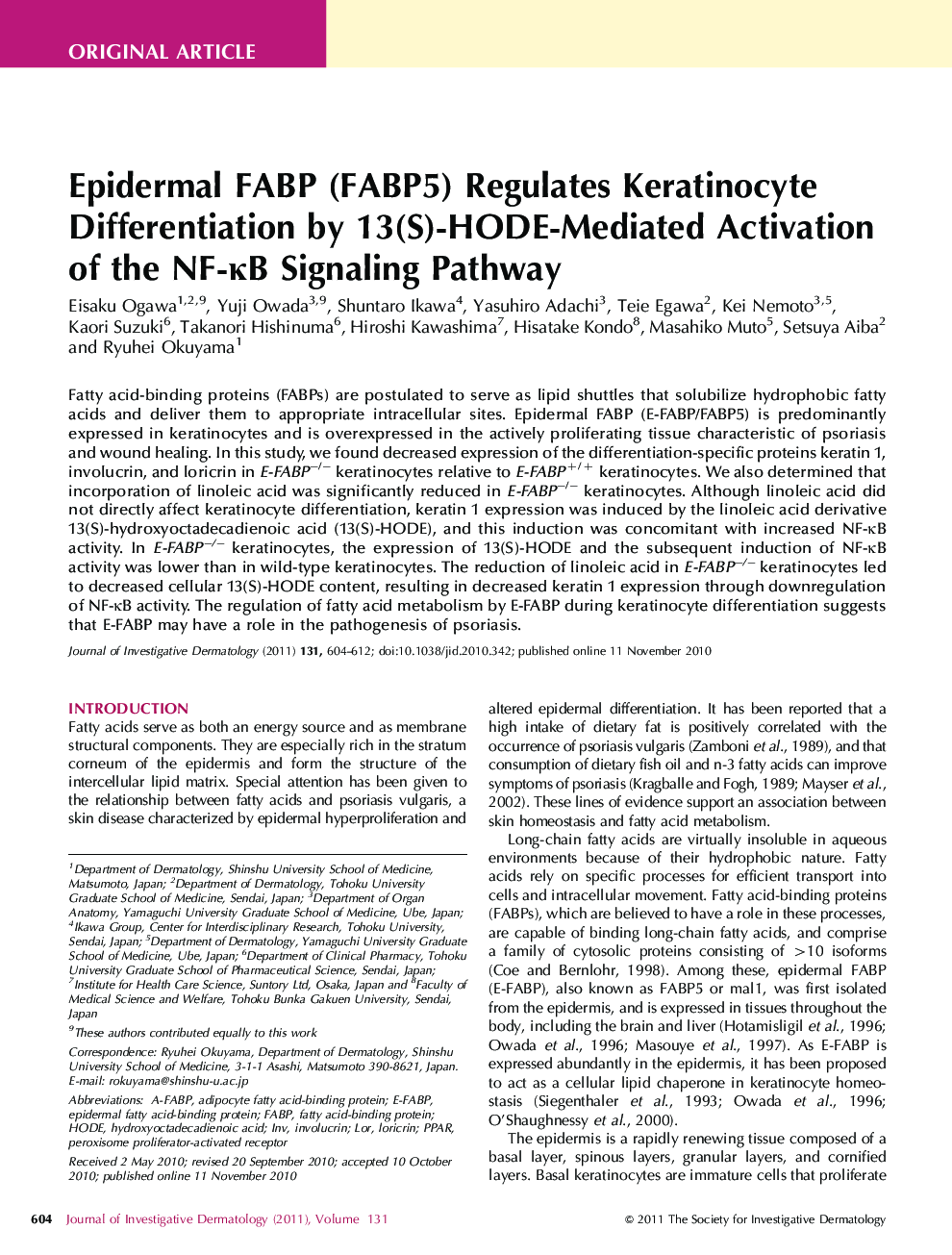| کد مقاله | کد نشریه | سال انتشار | مقاله انگلیسی | نسخه تمام متن |
|---|---|---|---|---|
| 3215715 | 1203541 | 2011 | 9 صفحه PDF | دانلود رایگان |

Fatty acid-binding proteins (FABPs) are postulated to serve as lipid shuttles that solubilize hydrophobic fatty acids and deliver them to appropriate intracellular sites. Epidermal FABP (E-FABP/FABP5) is predominantly expressed in keratinocytes and is overexpressed in the actively proliferating tissue characteristic of psoriasis and wound healing. In this study, we found decreased expression of the differentiation-specific proteins keratin 1, involucrin, and loricrin in E-FABP−/− keratinocytes relative to E-FABP+/+ keratinocytes. We also determined that incorporation of linoleic acid was significantly reduced in E-FABP−/− keratinocytes. Although linoleic acid did not directly affect keratinocyte differentiation, keratin 1 expression was induced by the linoleic acid derivative 13(S)-hydroxyoctadecadienoic acid (13(S)-HODE), and this induction was concomitant with increased NF-κB activity. In E-FABP−/− keratinocytes, the expression of 13(S)-HODE and the subsequent induction of NF-κB activity was lower than in wild-type keratinocytes. The reduction of linoleic acid in E-FABP−/− keratinocytes led to decreased cellular 13(S)-HODE content, resulting in decreased keratin 1 expression through downregulation of NF-κB activity. The regulation of fatty acid metabolism by E-FABP during keratinocyte differentiation suggests that E-FABP may have a role in the pathogenesis of psoriasis.
Journal: Journal of Investigative Dermatology - Volume 131, Issue 3, March 2011, Pages 604–612